Chobunsai Eishi Paintings
Chobunsai Eishi, born Hosoda Eishi in 1756, was a prominent Japanese ukiyo-e artist known for his elegant portrayals of beautiful women, or bijinga. He hailed from an affluent samurai family, which gave him access to a higher level of education and cultural training than many of his contemporaries in the world of ukiyo-e. Eishi's father was a samurai in the service of the shogun, and Eishi himself was initially intended to follow in his father's footsteps, serving as a samurai in the Tokugawa shogunate.
Despite his initial career path, Eishi developed a strong interest in art and eventually left his samurai status to pursue a career as a painter. He initially trained under the Kanō school, which was the dominant style of painting at the time, emphasizing formal, academic, and Chinese-influenced painting techniques. However, Eishi transitioned to the popular ukiyo-e style, which focused on the 'floating world' of entertainment, pleasure quarters, and the beauty of the natural world.
Eishi's style is characterized by its refined and graceful figures, with a particular emphasis on elongated and elegant forms. His works often featured courtesans, kabuki actors, and scenes from literature and history, presented with a sense of sophistication and accessibility that appealed to the merchant classes. Eishi was highly successful in his time, and he enjoyed the patronage of wealthy clients.
By the 1790s, Eishi was prolific in producing ukiyo-e prints, working with various publishers to create series of prints and illustrated books. He was notable for his competition with other great artists of the period, such as Utamaro, who was also renowned for his depictions of women. Although Eishi's style was distinct, he proved to be a formidable rival in the art market.
Towards the end of his career, Eishi returned to painting and left behind the world of printmaking. He shifted his focus to creating works that leaned more towards the traditional and academic styles he had learned in his youth. Eishi's legacy is marked by his influence on the development of the bijinga genre within ukiyo-e, and his works are considered important contributions to the late Edo period's art history. He passed away in 1829, leaving behind a body of work that continues to be celebrated for its beauty and elegance.
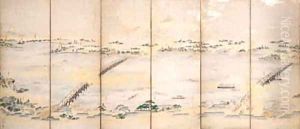


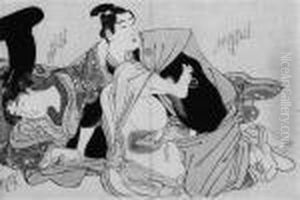

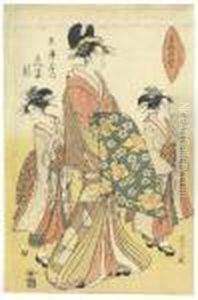
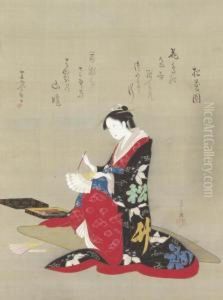

















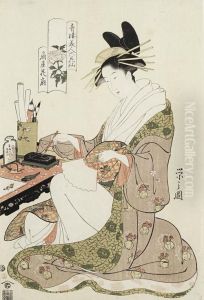








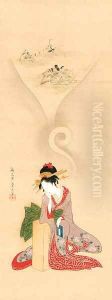
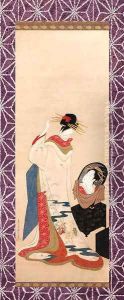









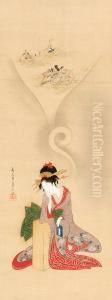


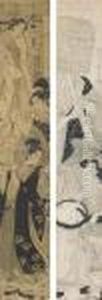

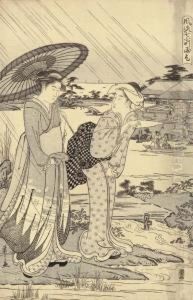




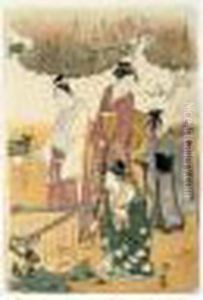





![Rain [right of the pair Beauties in Spring]](https://www.niceartgallery.com/imgs/4562494/s/chobunsai-eishi-rain-right-of-the-pair-beauties-in-spring-c99bac8e.jpg)
![Moonlight [left of the pair Beauties in Spring]](https://www.niceartgallery.com/imgs/4562530/s/chobunsai-eishi-moonlight-left-of-the-pair-beauties-in-spring-e83c82cc.jpg)